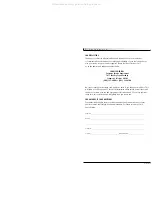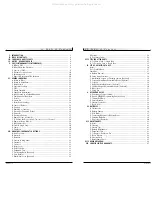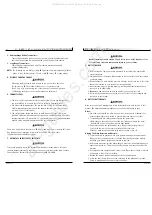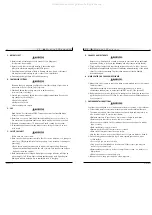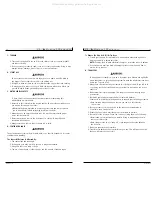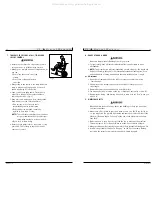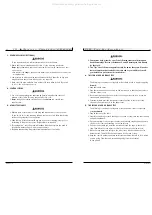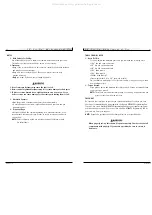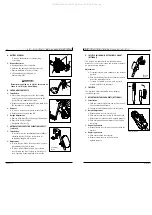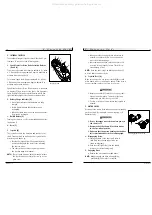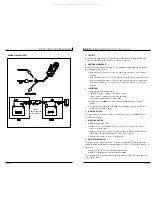
930482 Rev. A
V I I . W a r n i n g s : C o m p o n e n t s & O p t i o n s
23
I. PNEUMATIC TIRES
Proper inflation extends the life of your tires and makes your chair easier to use.
1. Do not use this chair if any of the tires are under- or over-inflated. Check weekly
for proper inflation level, as listed on the tire sidewall.
2. Low pressure in a tire may cause the chair to veer to one side and result in a
loss of control.
3. An over-inflated tire may burst.
4.
Never
use a gas station air pump to inflate a tire. Such pumps provide air at
high volume
, and could cause the tire to burst. To prevent tire damage:
•Use a hand pump (or a
low volume
air pump) to inflate tires.
•Use a tire gauge to check pressure.
J. POSITIONING BELTS (OPTIONAL)
Use a positioning belt only to help support your posture. Improper use of such
belts may cause severe injury or death.
1. Make sure you are not at risk to slide down in the wheelchair seat. If this occurs,
you may suffer chest compression or suffocate due to pressure from the belt.
2. A pelvic wedge or a similar device can help keep you from sliding down in the
seat. Consult your health care professional to find out if you need such a device.
3. The belt must be snug, but must not be so tight that it interferes with breath-
ing.You should be able to slide your open hand, flat, between the belt and your
stomach.
4. Make sure you can easily remove the belt in an emergency.
5.
Never
use a positioning belt:
•In place of a motor vehicle seat belt. In an accident or sudden stop you
may be thrown from the chair. A positioning belt will not prevent this,
and further injury may result from the belt.
•As a restraint. A restraint requires a doctor’s order.
•On a rider who is comatose or agitated.
K. PUSH HANDLES
1. Push handles provide secure points for an attendant to propel and control the
chair. This helps to prevent a fall or tip-over.
2. Check to make sure push handle grips will not rotate or slip off.
V I I . W a r n i n g s : C o m p o n e n t s & O p t i o n s
930482 Rev. A
22
E. FASTENERS
Many of the screws, bolts and nuts on this chair are special high-strength
fasteners. Use of improper fasteners may cause your chair to fail.
1. Only use fasteners provided by Sunrise.
2. If fasteners become loose, tighten them as soon as you can.
3. Over- or under-tightened fasteners may fail or cause damage to chair parts.
•
See Section IX
, “Set-Up, Adjustment & Use”, for proper torque settings.
F. FOOTRESTS
1. At the lowest point, footrests should be at least 2 1/2 inches off the ground. If
set too LOW, they may “hang up” on obstacles you can expect to find in normal
use. This may cause the chair to stop suddenly and tip forward.
2. To avoid a trip or fall when you transfer:
•Make sure your feet do not “hang up” or get caught in the space
between the footrests.
•Avoid putting weight on the footrests, as the chair may tip forward.
•Remove or swing the footrests out of the way, if possible.
3.
Never
lift this chair by the footrests. Footrests detach and will not bear
the weight of this chair. Lift this chair only by non-detachable parts of the
main frame.
G. MOTOR LOCKS
1. Do not engage or disengage motor locks
unless
power to the chair is
off
.
2. Be aware that the chair
will not have brakes
when motor locks are in the
free-wheel position.
3. Make sure that the person pushing the chair has full control when motor locks
are disengaged.
H. ON/OFF SWITCH
1.
Never
use the ON/OFF switch to stop the chair
except
in an emergency.
This will result in an
abrupt
stop, and may cause you to fall.
2. To slow your chair to a stop, return the joystick to neutral.
All manuals and user guides at all-guides.com


